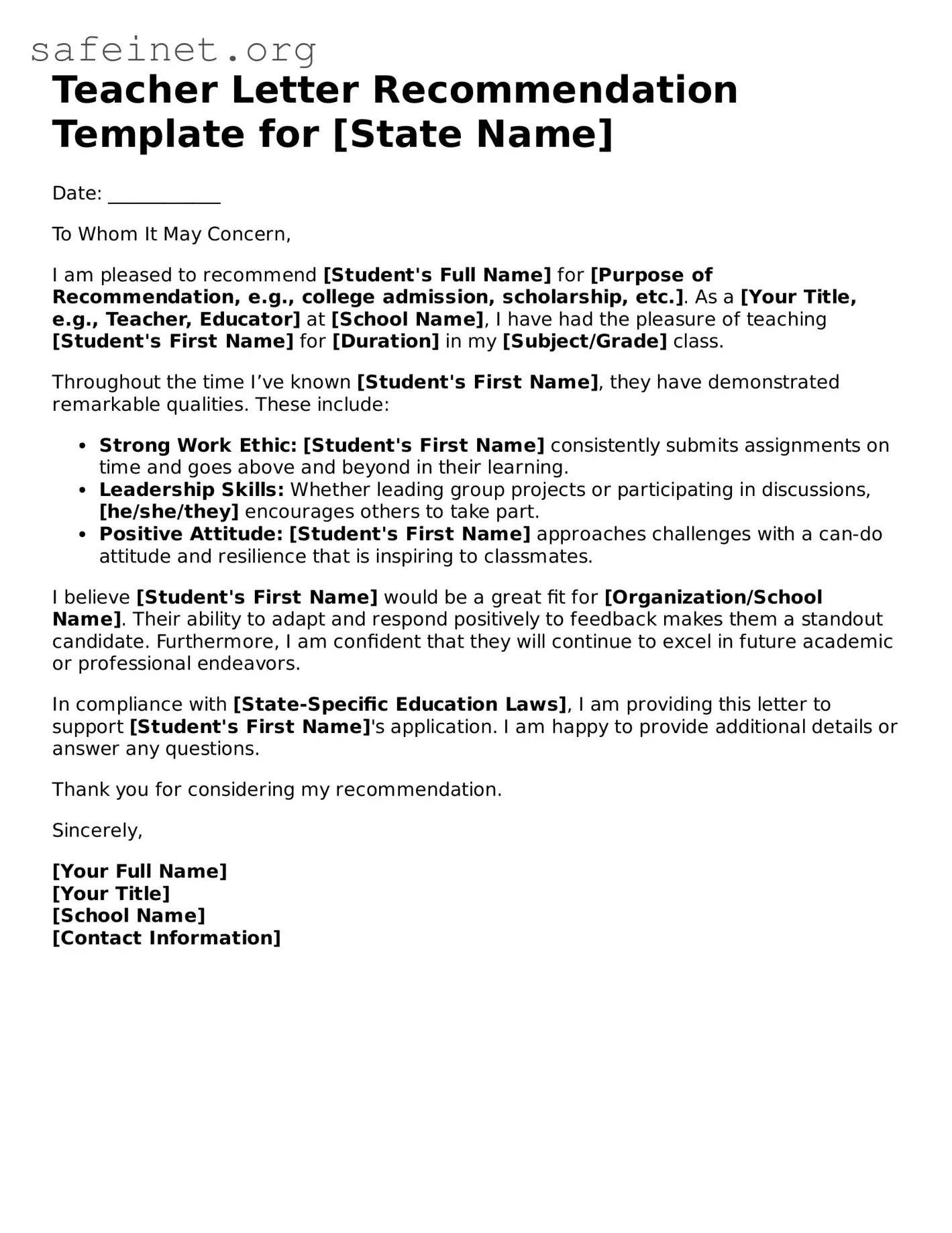Teacher Letter Recommendation Template for [State Name]
Date: ____________
To Whom It May Concern,
I am pleased to recommend [Student's Full Name] for [Purpose of Recommendation, e.g., college admission, scholarship, etc.]. As a [Your Title, e.g., Teacher, Educator] at [School Name], I have had the pleasure of teaching [Student's First Name] for [Duration] in my [Subject/Grade] class.
Throughout the time I’ve known [Student's First Name], they have demonstrated remarkable qualities. These include:
- Strong Work Ethic: [Student's First Name] consistently submits assignments on time and goes above and beyond in their learning.
- Leadership Skills: Whether leading group projects or participating in discussions, [he/she/they] encourages others to take part.
- Positive Attitude: [Student's First Name] approaches challenges with a can-do attitude and resilience that is inspiring to classmates.
I believe [Student's First Name] would be a great fit for [Organization/School Name]. Their ability to adapt and respond positively to feedback makes them a standout candidate. Furthermore, I am confident that they will continue to excel in future academic or professional endeavors.
In compliance with [State-Specific Education Laws], I am providing this letter to support [Student's First Name]'s application. I am happy to provide additional details or answer any questions.
Thank you for considering my recommendation.
Sincerely,
[Your Full Name]
[Your Title]
[School Name]
[Contact Information]
